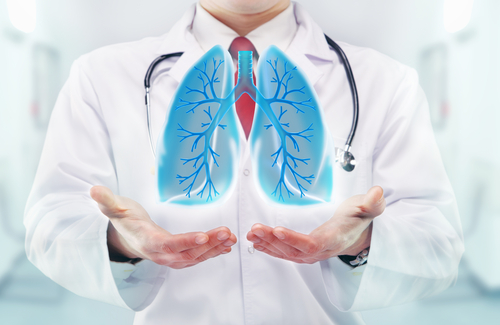Lung Disease Evident in CF Patients in Study Despite ‘Normal’ Lung Function

Signs of lung disease were evident in most cystic fibrosis (CF) patients with normal lung function in a small study, and related with a higher number of pulmonary exacerbations and longer antibiotic use.
These findings, based on a mix of lung health measures, indicate that such disease can precede changes in pulmonary function, and highlight the importance of early screening to prevent CF progression, its researchers said.
The study, “How abnormal is the normal? Clinical characteristics of CF patients with normal FEV1,” was published in the journal Pediatric Pulmonology.
Forced expiratory volume in one second (FEV1), a measure of how much air can be exhaled in one second after a deep breath, is a standard assessment of disease severity in CF. Values of 80% or higher in percent predicted FEV1 are considered normal. This measure, commonly used in clinical trials, also helps physicians, patients, and caregivers in managing CF and serves as a guide for treatment decisions.
A normal FEV1, however, may wrongly indicate being “free of disease,” the researchers wrote, and lead to fewer treatments being offered and lower treatment adherence. Previous studies in children whose FEV1 values correspond with mild disease or normal pulmonary function, they added, reported abnormalities in chest CT scans and evidence of early disease.
Similar assessments in older patients whose FEV1 scores are considered within a normal and healthy range are needed.
Researchers analyzed the presence of lung disease in 89 CF patients, ages 4 to 49, with normal FEV1, being followed at two CF centers: Hadassah Medical Center, in Jerusalem, and Vall d’Hebron Hospital, in Barcelona, between 2015 and 2018.
Patient records included data covering specific mutations in the CFTR gene, and patients’ body mass index (a measure of body fat), pancreatic insufficiency — a result of thick mucus blocking the release of enzymes from the pancreas — and CF-related diabetes (CFRD).
Lung disease was assessed by CT scans, the number of exacerbations and chronic infections with Pseudomonas aeruginosa — the most important bacteria in progressive and severe CF lung disease — in the year prior to the study’s start, and via the lung clearance index (LCI), which is considered to reflect abnormalities in the small airways and, when such changes are seen, is associated with early structural lung disease.
Clinical deterioration thought due to pulmonary exacerbations (flares) included anxiety, shortness of breath, fever, increased cough, changed sputum quantity/quality, poorer nutritional status, worsening of pulmonary function, and a needed change in antibiotics or increased use of them. In this regard, the team also assessed the duration of antibiotic treatment over the study’s previous year.
Exacerbations were classified as minor if patients required oral antibiotics, and major if they needed intravenous (into the vein, IV) antibiotics.
Most study participants (62, or 70%) had two disease-causing mutations, and these associated with more severe disease and with pancreatic insufficiency. Eleven patients had CFRD.
Abnormally high LCI values (above 7.5) were found in 86% of these patients. CT scans revealed significant structural changes in the lungs of 92% of the 65 patients whose scans were analyzed.
“The most common structural abnormalities observed were hyperaeration of the lungs [loss of elasticity in the air sacs], increased peribronchial thickening [due to mucus or fluid buildup], and bronchiectasis (in 83%, 78%, and 54% of the patients, respectively,” the researchers reported.
Chronic P. aeruginosa infection was observed in 19, or 21%, of the patients. Compared to those without such infection, these people were older (mean age, 26.8 vs. 14.5), had significantly higher LCI values (11.9 vs. 9.7), and higher total Brody scores (38.3 vs. 20.2); TBS, as these scores are called, reflect abnormal findings on CT scans.
The researchers also found that 19% of these patients had at least one major pulmonary exacerbation requiring IV antibiotic treatment over the previous year. Those in this group, compared with patients without major flares, also had a higher mean LCI (11.6 vs. 10.0) and higher TBS (37.8 vs. 18.1).
Patients needing IV antibiotics for longer than 14 days in the previous year also had a higher mean LCI (11.2 vs. 9.9) and higher mean TBS (45.4 vs. 20.2) than did those using IV antibiotics for less than 14 days.
Overall, these results show a relationship between clinical measures of CF severity and LCI and TBS values.
“Frequent monitoring of lung disease by LCI and chest CT, repeated sputum cultures with eradication of newly acquired Pseudomonas infection, and early treatment of PEx may prevent or at least postpone irreversible lung damage and disease progression,” the team concluded.
Minimal exposure to radiation is possible with newer and short duration imaging technology, the study noted, and previous research has “demonstrated that acute structural changes can be reversible when treated immediately.”







